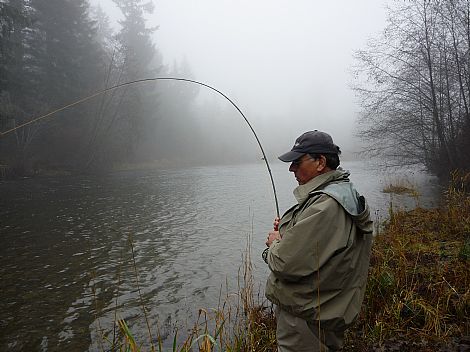Recipe:
Hook: 14 or 16 dry fly hook, wide gap and barbless preferred
Thread: UNI-Thread 6/0 chartreuse or your choice
Tail: five fibres from a pheasant tail
Hackle: dun, grizzly or tan
Front Hackle: grey Hungarian Partridge
This fly is effective for the small olives like the Baetis which occur in multiple hatches. It is from the impressionistic school favoured by Charles Ritz who favoured "le President Billiard" in most of his dry fly efforts.
Step by step
Start the thread and tie in the fibes of pheasant for the tail. It should be about twice the body/shank length.
Tie in the hackle just forward of the tie in point of the tail. Leave a bit of colour of the thread exposed here. Wrap to just more than half the shank length to leave enough space for the partridge collar hackle.
Tie in a grey partridge hackle by the tip. Fold the hackle as you wrap it in. I understand that this operation is fussy and challenging for some but the effect it achieves on the finished fly is impressive. Stick with it and you will be satisfied with the results.
Tie in the partridge hackle, whip finish. These hackles have a thick stem. It is sometimes better to crush the stem with your fingernail before tying it in so that the tie off is made secure. Be sure that this hackle is effectively tied in or you will be disappointed when you fish it.
Test the proportions by setting the finished fly on a flat surface and the tail and hackle should support the hook off the surface. You want this fly to float above the surface as a dry fly.
Tied by Wally Nowak
